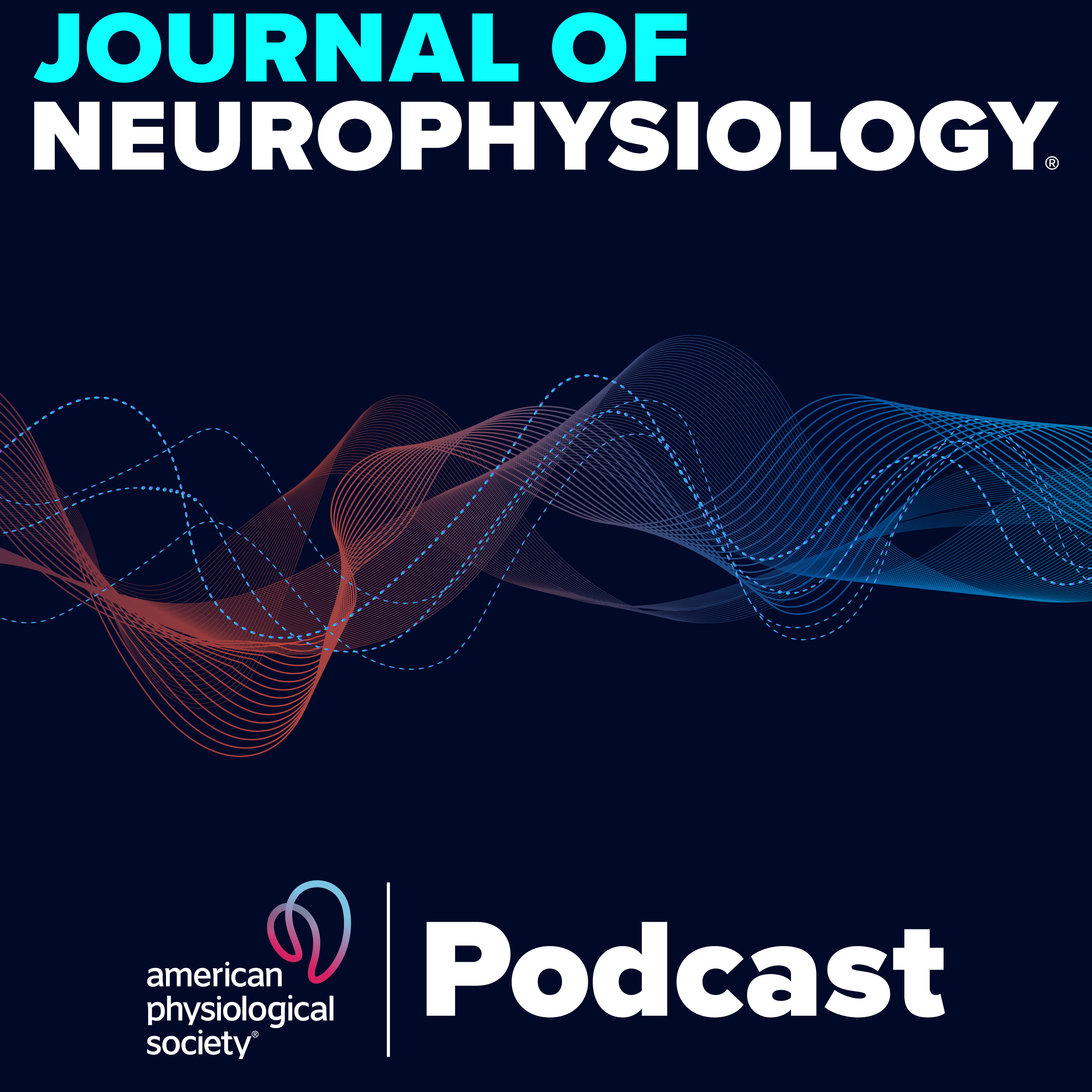Episodes
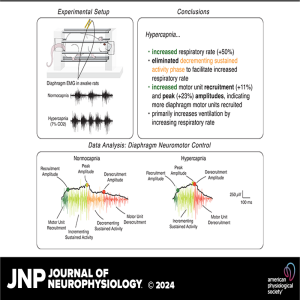
Friday Feb 14, 2025
JNP Podcasts: Hypercapnia elicits changes in diaphragm neuromotor control
Friday Feb 14, 2025
Friday Feb 14, 2025
In this episode, coauthor Obaid U. Khurram discusses their recently published research, "Hypercapnia Impacts Neural Drive and Timing of Diaphragm Neuromotor Control." The study explores the complex neuromotor control of the diaphragm muscle (DIAm) under hypercapnic conditions, an area that has not been fully understood. Dr. Khurram explains how hypercapnia increases motor unit recruitment and discharge rates, indicating an enhanced respiratory drive. The research also reveals how hypercapnia affects the postinspiratory (descending) ramp of diaphragm EMG activity, shortening it to facilitate faster respiratory rates. Tune in for valuable insights into the physiological mechanisms of diaphragm function and adaptation in response to elevated carbon dioxide levels.
Journal of Neurophysiology 2024 132:6, 1966-1976
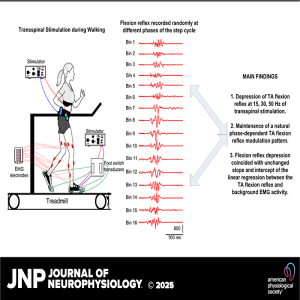
Friday Jan 31, 2025
JNP Micro Podcasts: Flexion reflexes during transspinal stimulation
Friday Jan 31, 2025
Friday Jan 31, 2025
In this episode, coauthors Maria Knikou and Abdullah M. Sayed Ahmad discuss their research on "Transspinal stimulation downregulates flexion reflex pathways during walking in healthy humans." The study investigates how transspinal stimulation over the thoracolumbar region affects reflex pathways during walking, revealing its ability to suppress the tibialis anterior flexion reflex at varying frequencies (15, 30, and 50 Hz).
Journal of Neurophysiology 2025 133:2, 530-538
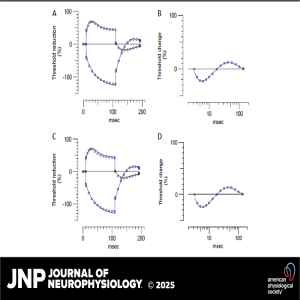
Friday Jan 31, 2025
Friday Jan 31, 2025
In this episode, coauthor Arun V. Krishnan highlights the article titled "Impact of glucagon-like peptide-1 receptor agonists on axonal function in diabetic peripheral neuropathy." Diabetic peripheral neuropathy is known to be relentlessly progressive and irreversible. Prospective studies in 24 participants with diabetic peripheral neuropathy (DPN) treated with glucagon-like peptide-1 receptor agonists (GLP-1RA) demonstrated improvements in clinical neuropathy scores, nerve conduction studies, and axonal excitability recordings. Analysis of axonal excitability recordings revealed the mechanism for GLP-1RA improvement in DPN were changed consistent with improvements in Na+/K+–ATPase pump function, and this was supported by mathematical modeling.
Journal of Neurophysiology 2025 133:1, 14-21
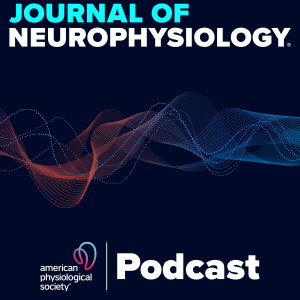
Friday Jan 31, 2025
JNP Micro Podcasts: Uncovering Balance Control from Foot Force
Friday Jan 31, 2025
Friday Jan 31, 2025
Join coauthors Rika Dimitrova and Kaymie Shiozawa in this podcast where they dive deep into their research on human balance control. In this episode, they explore the insights of three papers: "Frequency-domain patterns in foot-force line-of-action: an emergent property of standing balance control," "Human foot force suggests different balance control between younger and older adults," and "Human foot force informs balance control strategies when standing on a narrow beam."
Their work uncovers a novel, closed-form analytical result that links the frequency-domain patterns of foot force to the body’s neuromotor control during quiet standing. The podcast delves into the complexities of balance control in different age groups, demonstrating how older adults adapt their balance strategies to compensate for muscle weakness, relying more on neural feedback. With a focus on foot-ground force interactions, the duo breaks down how these findings can provide a new balance assessment tool, highlighting its significance in both research and real-world applications.
Additionally, Dr. Sugimoto-Dimitrova and Dr. Shiozawa discuss the challenges of maintaining balance in more demanding conditions—such as standing on a narrow beam—and explore how biomechanics and neural control work together to stabilize the body.
Journal of Neurophysiology 2024 132:5, 1445-1456
Journal of Neurophysiology 2024 132:5, 1457-1469
Journal of Neurophysiology 2024 132:4, 1302-1314
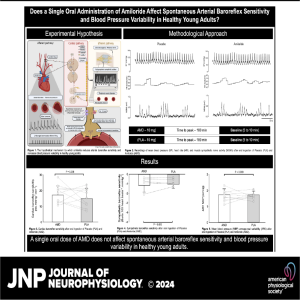
Thursday Jan 09, 2025
Thursday Jan 09, 2025
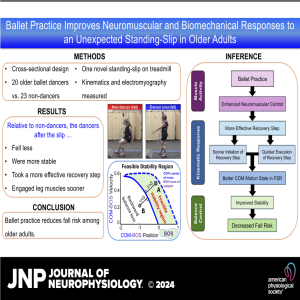
Thursday Jan 09, 2025
Thursday Jan 09, 2025
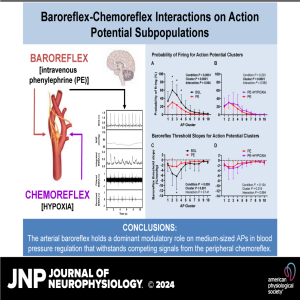
Thursday Jan 09, 2025
JNP Micro Podcasts: Reflex interactions on action potential subpopulations
Thursday Jan 09, 2025
Thursday Jan 09, 2025
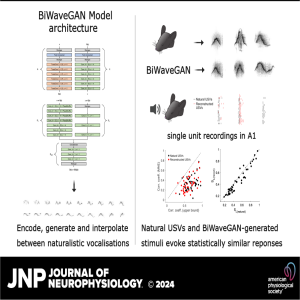
Monday Nov 25, 2024
Monday Nov 25, 2024
In this episode, coauthors Andriy S. Kozlov, Johnny Reilly, and John D. Goodwin discuss their recently published research titled "Bidirectional Generative Adversarial Representation Learning for Natural Stimulus Synthesis." The authors introduce a groundbreaking artificial neural network that generates animal vocalization waveforms and interpolates between them to create new, realistic vocalizations. The team shares how their synthetic stimuli drive auditory cortical neurons in mice just as effectively as natural vocalizations, producing receptive field features with equal predictive power. Tune in as Andriy, Johnny, and John explain the significance of their findings and the potential implications of this innovative technology for sensory neuroscience.
Journal of Neurophysiology 2024 132:4, 1156-1169
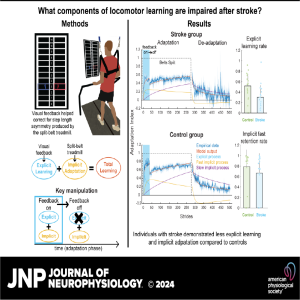
Monday Nov 25, 2024
JNP Micro Podcasts: Locomotor Learning in Chronic Hemiparetic Stroke
Monday Nov 25, 2024
Monday Nov 25, 2024
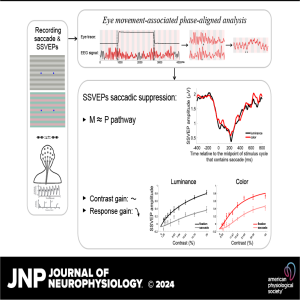
Monday Nov 25, 2024
JNP Micro Podcasts: Saccadic Suppression of Color and Luminance
Monday Nov 25, 2024
Monday Nov 25, 2024
In this JNP MicroPodcast, Yuan Zhang highlights the recently published research titled "The Execution of Saccadic Eye Movements Suppresses Visual Processing of Both Color and Luminance in the Early Visual Cortex of Humans." The study reveals how saccadic eye movements—rapid shifts in eye position—suppress the processing of both luminance and chromatic stimuli in the early visual cortex. Yuan breaks down how the research uses a contrast response model to show that saccades reduce response gain, rather than altering contrast gain, pointing to a multiplicative mechanism that affects both the parvocellular and magnocellular pathways. Tune in for a concise overview of these intriguing findings and their implications for visual processing.
Journal of Neurophysiology 2024 131:6, 1156-1167

